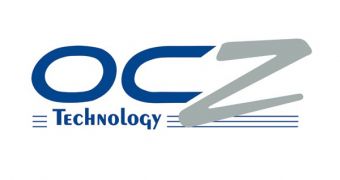OCZ has finished work on its newest and greatest solid state drive controller, the Indilinx Everest 2, which will start out as part of the Vertex 4 SSDs.
We aren't going to talk about the vertex 4 just yet. That will come later. Instead, we'll try to sum up the main benefits of the new chips.
Essentially, the Indilinx Everest 2 series are SSD controllers that will compete with SandForce on the high-end market.
One thing is that their random input/output performance is of 120,000 I/O operations per second (for SATA drives).
Another entry in the specs sheet is the existence of up to eight NAND Flash channels with up to 16-way interleaving each.
Furthermore, the cache memory can be of up to 8 Gb (1GB) of 800 MHz DDR2/DDR3.
Not only that, but also multi-level ECC is present (error correcting code), with 128-bit correction per 1KB data.
Nevertheless, the most relevant trait of the new chips is the maximum transfer rate: 535 MB/s when using synchronous flash.
"Our Indilinx Everest 2 platform with Ndurance 2.0 is truly in a class by itself. It convincingly outperforms all competing solutions while providing unparalleled reliability and exceptional value through its life-extending NAND flash management capabilities," said Ryan Petersen, CEO of OCZ Technology.
"This revolutionary architecture will be integral in our own storage developments going forward, and offers storage solution manufacturers with unprecedented performance, endurance and cost flexibility to optimize their designs."
SSDs based on the Indilinx Everest 2 will have power fail protection and optional Supercap support (prevents data loss in case of power failure).
As for data during normal operation, AES-256 encryption can be performed automatically, an RNA Redundant NAND Array will protect against catastrophic NAND flash failure and True end-to-end data path protection will perform data integrity checks at every juncture where data is transmitted, received, processed and stored (ensures that corrupted data will be detected and not propagated).

 14 DAY TRIAL //
14 DAY TRIAL //